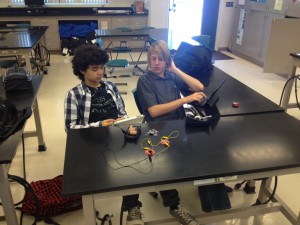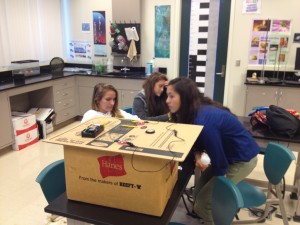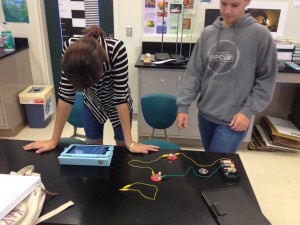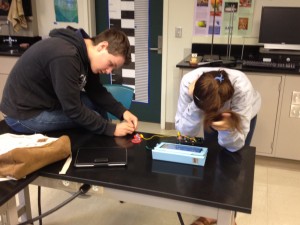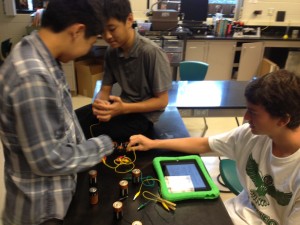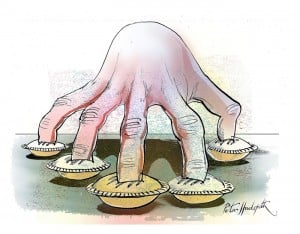Constructivism, models and transfer learning
Full disclosure alert: regardless of anything else I do or say, my fundamental belief in education comes from a fully constructivist framework. For those that care to get philosophical, this is based on work that dates back long before Dewey, but we could use him as a starting point for why experience and real, hands on, meaningful work are not just a good idea, but truthfully the only real way to get to the understanding of anything in the real world. That isn’t to say that there are times that telling kids something doesn’t have meaning, but when that won’t be grounded in a real experience or useful information or transfer it is not likely to have much usefulness or long-lasting effect.
“We only think when we are confronted with problems” – John Dewey
This week in our class we have been continuing our work utilizing the CASTLE curriculum that was designed by Mel Steinburg at Smith College and has been implemented for many years as an effective means to have students learn and apply a useful model for what electricity is. Brief description of that here:http://www.pasco.com/prodCatalog/EM/EM-8624_castle-kit/.
The power of this curriculum is that it is not teacher directed in the sense of lectures, but instead is unfolded as a series of investigations to try and understand how and why simple circuits with batteries and light bulbs work the way they do. I was first introduced to this curriculum in the mid-1990s at Arizona State University in the most excellent Modeling Workshop series which I still think is the finest professional development activity I’ve ever attended. http://modelinginstruction.org
This week’s opening activities had students trying to understand what is going on in wires when we connect batteries and lightbulbs together. I know an outsider might say “we’ll just tell them that electricity moves” – but good research and a constructivists pedagogical approach understand that knowing something and understanding something are two different things. All of my students already know about electricity – but none of them truthfully can apply the ideas to answer discrepant or novel phenomena – critical if we are to transfer the knowledge we have to solve problems. In our case, our students will eventually be using this knowledge to help members in our community (school, home, a larger community) find ways to save both money and environmentally friendly sustainable activities in their energy use at home.We will do this through the process of energy auditing with specific recommendations to improve efficiency and lower energy use and cost.
So what about this business with knowledge and learning? When do we teach something, and when do we let students develop it through real-world experience?
There is a marvelous discussion by Marc Chun, of the Hewlitt foundation about the importance of ways to build transfer that I think are relevant to this conversation here:
You will notice that he refers to this kind of learning as “deeper learning”. One of my goals over the last year has been to more closely tie the work we are doing in our MPX program and at the school in general to this deeper learning movement that is taking root across the country. More info on deeper learning here:
http://www.hewlett.org/deeperlearning
That’s all for today, but in the future I will need to add Why the question
“How do you know that?”
is so important. The value of making thinking visible through tools like whiteboards and thinking routines. The value of discrepant events to help expose naïve and experts thinking and what we understand in mathematics and science. why the work of Robert Gagne’s and his 9 events of instruction do fit in to project-based learning, and the value and challenge of instructional design as a whole.

